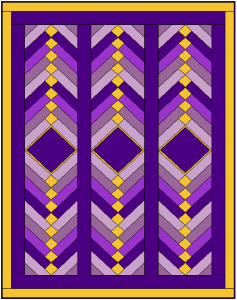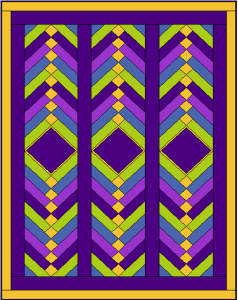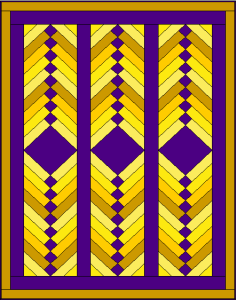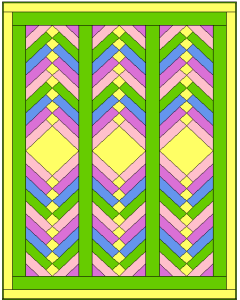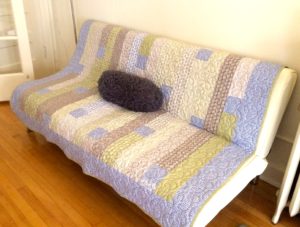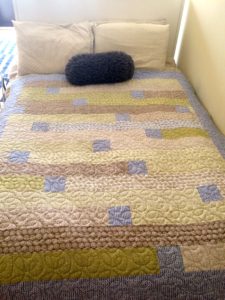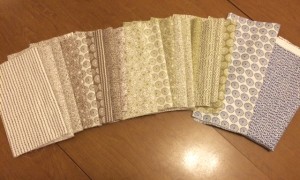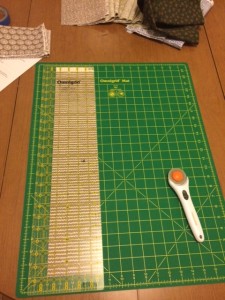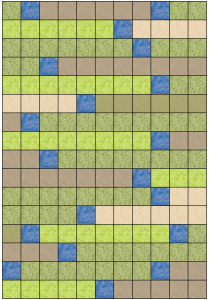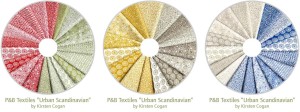Quilter’s Thread Mobile App has a new pattern prize for this month that you’ll want to have. This quilt pattern is called the Royal Braid quilt hence the pattern resembles a braid shape. The pattern design has four versions so start adding points up on our Quilter’s Thread Mobile App in order to win this pattern at the end of the month.
- Original Royal Braid 2. Multi-Color Royal Braid
3. Crown Royal Version 4. Spring Themed Royal Braid
The first quilt above is the original version of the Royal Braid quilt which has a variety of different shades of purple in it with little golden squares in between the braids. The second version of the Royal Braid quilt has multiple colors in it such as blue and green giving it a different look compared to the original version.
The third quilt version is the Crown Royal, which has more yellow than purple in it. You can cut around three logos from Crown Royal Bags if you want and place them where the three purple squares are in the middle of the quilt to give it a nice unique touch. The fourth version of the Royal Braid is a great pattern for spring with it’s bright colors and yellow squares makes the interlocking chain braid moving from one part of the quilt to the other come alive. You can choose to add a border like in the drawings above or you can leave it without one. Having a border let’s the pattern come to an end without running off the quilt making it feel as if it is unfinished.
Share with us any versions of the Royal Braid quilt pattern that you make on Quilter’s Thread Mobile App. Remember to stay active on Quilter’s Thread Mobile App in order to earn points to win this free pattern at the end of the month. Comments, uploading photos, and responding to surveys generate 1 point each. Liking 3 things on the app generates 1 point. Earn 10 points gets you a free pattern and 40 points gets you a free pattern and a Quilter’s Thread cloth shopping bag. Earn 75 points gets you a free pattern, shopping bag, and a $20 gift card.
Live Well. Quilt Well.
